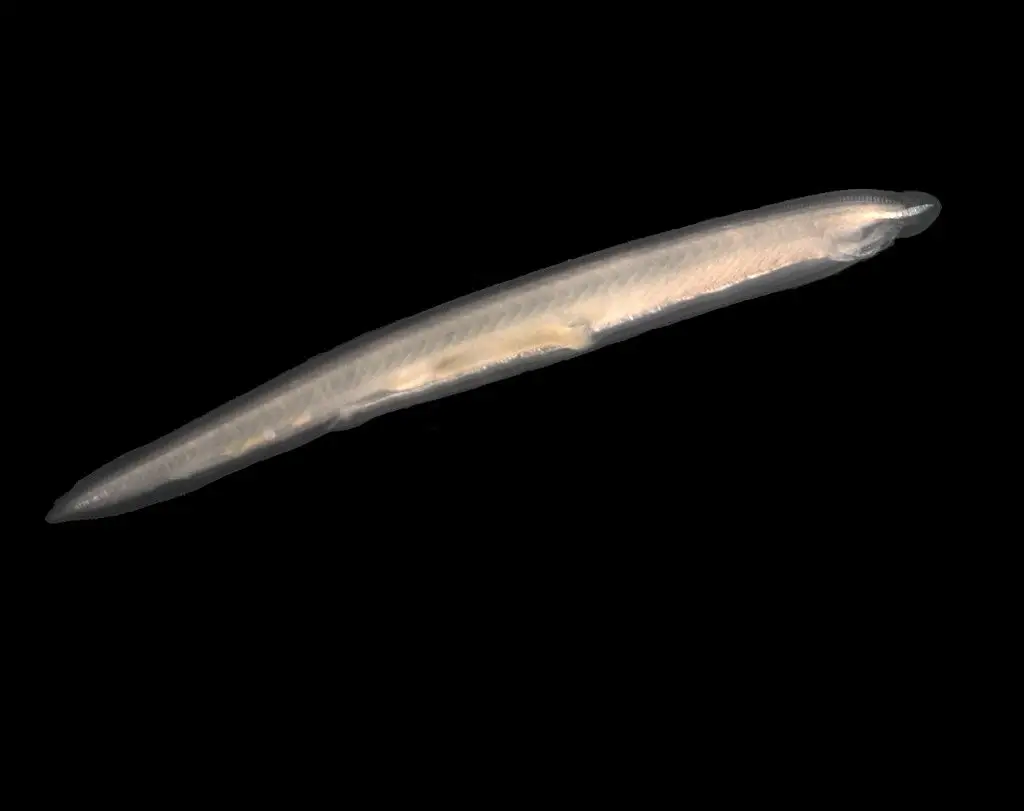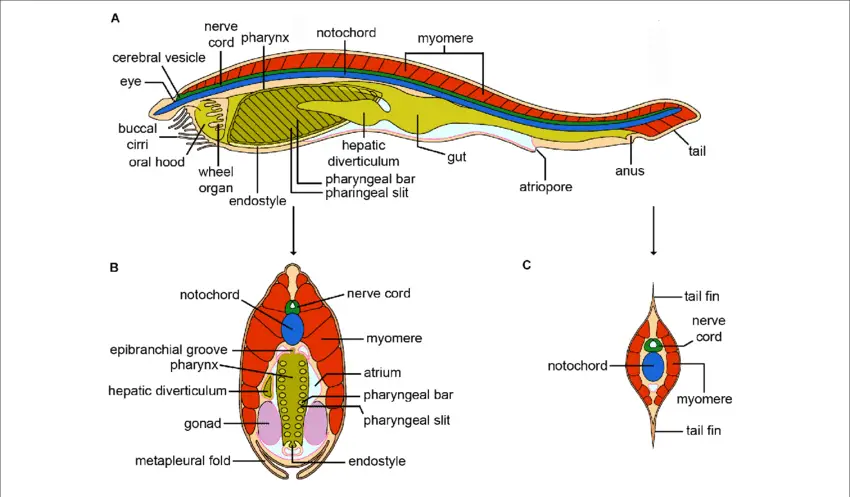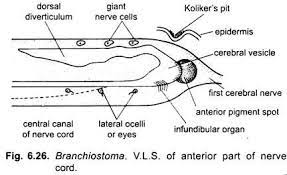Primitive Features of Subphylum Cephaochordata:
- Branchiostoma represent primitive members of phylum Chordata so all the Chordata features present in them are very simple.
- Assymetrical arrangments of different organs in Branchiostoma shows it ancestry of modern Chordata, the assymetrical body are much similar to the Echinodermata which represents that the are very near to Chordata as well as Non-chordate.
- In Branchiostoma the nervecord have an enlargement but it not form actual brain, so brain is absent in Branchiostoma like Non-chordata.
- In higher Chordate paired appendages present but in Branchiostoma there are no paired appendages as seen in Non-chordata.
- Their coelom is enterocoelous type which also present in higher Non-chordate.
- The skin is primitive type, the dermis layer absent, only epidermis present, single layer cells form epidermis.
- Metamerism is an advanced features but the myotomes or myomeres, the segmentation in muscle is an primitive features in Branchiostoma.

- In higher Chordate mouth is surrounded by jaw but in Branchiostoma the mouth is not surrounded by jaw.
- The dorsal hollow nerve cord present above the notochord, notochord do not form vertebral column.
- The larger sized pharynx, pharynx opening in atrial cavity through pharyngeal gill slits, endostyle in pharyngeal ventral wall, ciliary mode of feeding all are important features of Branchiostoma.
- Digestion canal is straight, there are no liver but the midgut diverticulum represent the liver.
- The circulatory system do not have any blood, blood do not have any respiratory pigment, there are no differentiation features between vein and arterie. Portal system present, hepatic portal system is present in Branchiostoma but it is primitive type.
- The skins of metapleural folds, fins take part in respiration, gill slits present but not much functional for respiration, no specific respiratory organ.
- Excretion occur through protonephridia with solenocytes, in general in higher Chordate the excretory organ is kidneys.
- The notochord have an enlarged portion with ventricle and no ganglion, the nerve have dorsal and ventral root but without ganglion.
- Gonads do not show sexual dimorphism, there are no gonoducts, the gametes comes outside of gonads through the aperture on gonads known as gonopore.
Degenerate Features of Subphylum Cephaochordata:
- Most of the workers think the primitive features present in Branchiostoma may be due to degeneration during the course of evolution.
- The ventricle and enlargement on the anterior side of nervecord show that possible they had brain but during evolution the brain get degenerated.
- The gonad do not open outside through any gonoducts directly open through gonopore aperture.
- They do not show any bony or cartilaginous endoskeleton or exoskeleton, some endoskeletal structure present but they are made of connective tissue.

Specialized Characteristics of Branchiostoma:
- There are some special peculiar features in Branchiostoma which makes them different from all other members of phylum Chordata, for those special features they are placed in a separate line in the history of evolution.
- The assymetry present in arrangements of different organs is peculiar in Branchiostoma.
- The notochord in Branchiostoma cross the brain regions and reach at the tip of the rostrum but this peculiar extra development of notochord give support to rostrum, it makes them able to make burrows.
- The mouth opening is surrounded by buccal cirri and the sensory papillae present on the buccal cirri able them to detect chemical nature of the food.
- The velar membrane and the velum with velar tentacles are completely peculiar in Branchiostoma.
- Wheel organ in their oral hood and the Hatschek’s groove, Hatschek’s pit are also a peculiar characteristics in Branchiostoma.

- The pharynx do not open directly through the gill slits, the pharynx open into the surrounded atrial cavity and the atrial cavity open outside thought the atriopore is a special features in Branchiostoma.
- The coelom is highly reduced due to the enlarged atrial cavity and large sized pharynx.
Reference Cephalochordata Characteristics Features Classification Examples and Diagram
Detailed Information on
Characteristics Features of Subphylum Urochordata
Classification of Subphylum Urochordata
Examples of Subphylum Urochordata: Clavellina, Salpa, and Doliolum
Examples of Subphylum Urochordata
Branchiostoma Habitat and Geographical Distribution
External Morphology of Branchiostoma
Body Wall and Endoskeleton of Branchiostoma
Coelom and Movement in Branchiostoma
Digestive System of Branchiostoma
Digestion and Feeding Mechanism in Branchiostoma
Respiratory and Reproductive System of Branchiostoma
Excretory and Reproductive System of Branchiostoma
Branchiostoma: Morphology, Digestive, Reproductive, Nervous System
Hi Everyone!!! Welcome to Imaluop. Imaluop always try to learn some new and he want to share to other people. Here we will try to learn various topics on Science, specially on Biological Sciences.